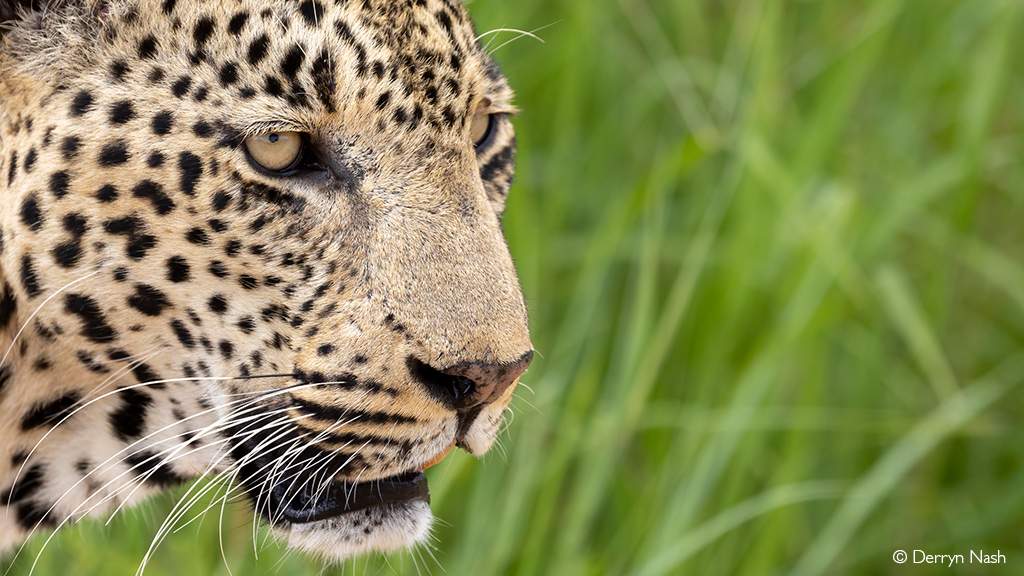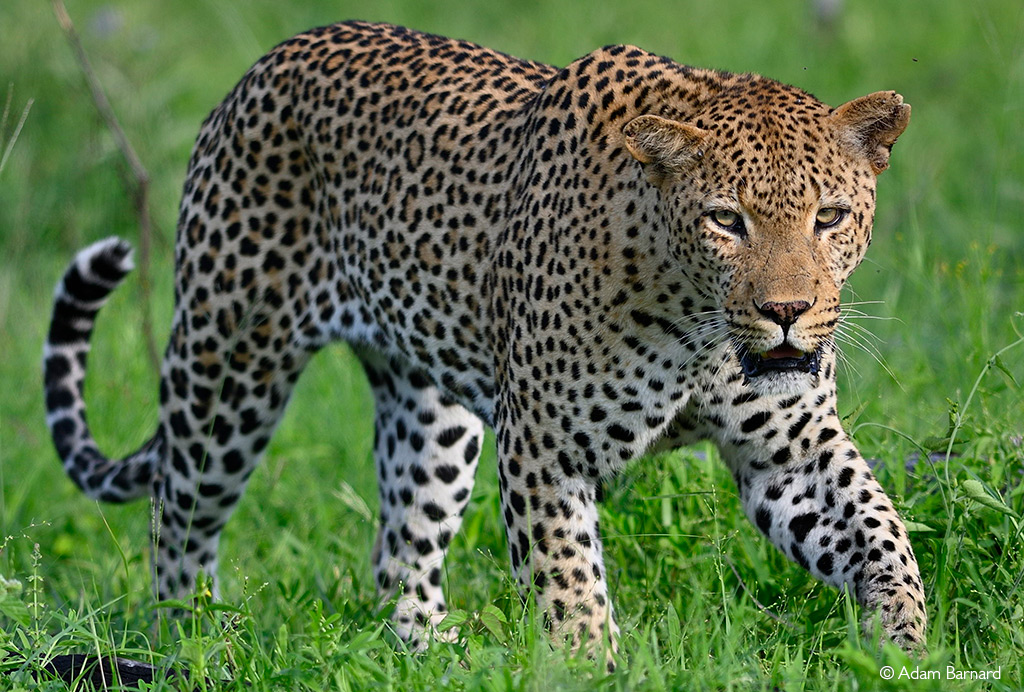
Leopards may not be able to change their spots, but they do inherit them – to an extent. This is according to new research published in Mammalian Biology, which details the findings of scientists who set out to investigate whether images of leopards could be used to draw conclusions about relatedness.
One of the significant concerns with any decline in species population is the accompanying loss of genetic diversity, thus increasing levels of inbreeding and relatedness. This effect is exacerbated as the remaining populations are fragmented and isolated due to habitat loss. Loss of genetic diversity, in turn, makes animals vulnerable to inbreeding depression and offers less resilience in the face of stochastic events like drought or disease. Thus, monitoring the genetic health of a population is a priority for conservationists but can be extremely difficult where cryptic species like leopards are concerned.
Every leopard sports a pattern of rosettes and whisker spots as unique to that individual as a set of human fingerprints. Furthermore, motion-triggered cameras have long proved an invaluable tool for leopard researchers, allowing them to visualise leopards even in areas where the animals are all but impossible to observe directly. Thus, researchers wanted to determine whether or not the phenotypic similarity of individuals (the extent to which they share physical traits) could be used as a “proxy” for genetic similarity.

To do this, they used images gathered from the Sabi Sand Game Reserve in South Africa. This reserve was selected because records of leopard sightings date back to the 1970s, with detailed life history records of mothers and their cubs. (Paternity in leopards is impossible to establish without genetic analysis, as females will mate with multiple males and cubs in the same litter may not have been fathered by the same male). As a consequence, photographs of known related individuals could be compared.
The authors focused on flank rosette patterns, using sophisticated software designed for image analysis of individual animals (not unlike facial recognition software) to quantify the similarities between leopards. This meant examining characteristics like the number of rosettes, the total area covered, and the angles and distances between spots. They also investigated whisker spot patterns using a scoring method already established for lion identification.

They found that mother-offspring pairs showed some phenotypic similarities in rosette markings and whisker spot patterns for six of the 15 traits measured. This finding aligns with similar research on giraffes and cheetahs and provides an exciting insight into the relationship between leopard genetics and their physical expression in pelage patterns. However, these similarities were not apparent across all samples from the population, and the authors conclude that phenotypic similarities cannot reliably be used to draw conclusions on the relatedness of individuals. As such, it cannot be used for biological monitoring.
Inheritance of physical traits is a complicated process, usually influenced by multiple genes and further complicated by environmental effects. The foundations have been laid for further research, along with an important baseline on phenotypic variation within a healthy, free-ranging leopard population.
Resources
Reference (available through a paywall): Smyth, L. K. et al. (2022) “Like Mother Like Daughter: Quantifying the Relationship between Relatedness and Phenotypic Similarity in Leopard Pelage Patterns,” Mammalian Biology
Read all there is to know about the African leopard.
Read how human activity is resulting in leopard inbreeding.
Find out the seven best places to spot leopards in Africa.
To comment on this story: Login (or sign up) to our app here - it's a troll-free safe place 🙂.![]()







